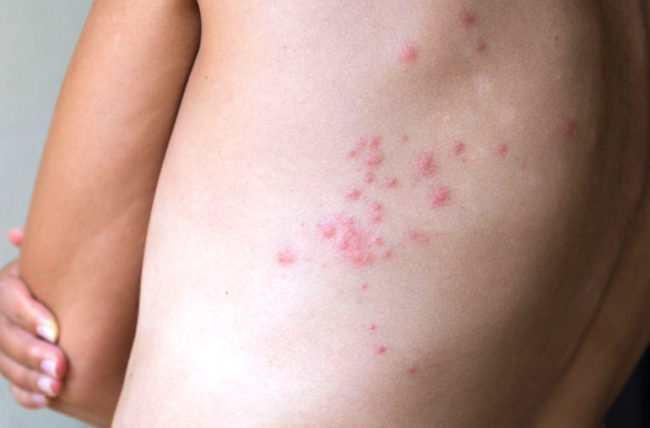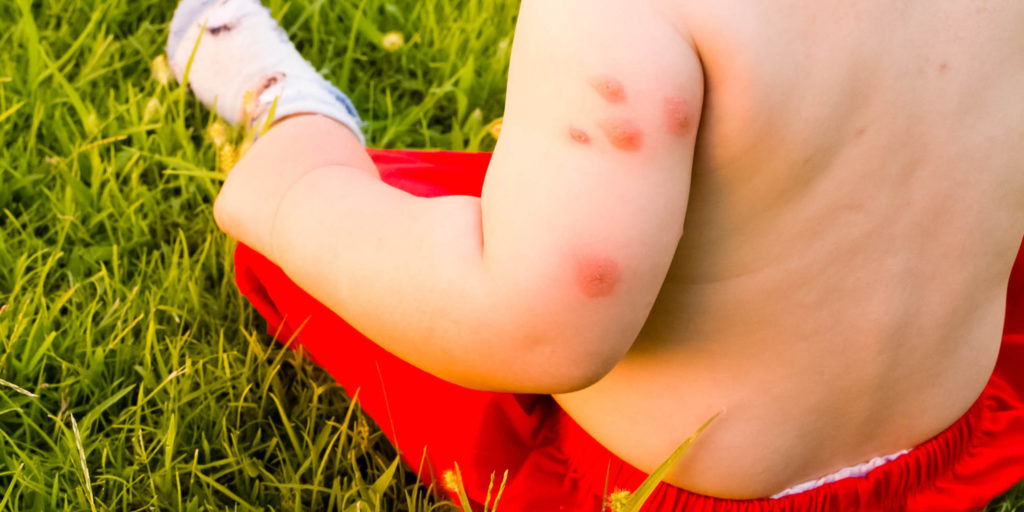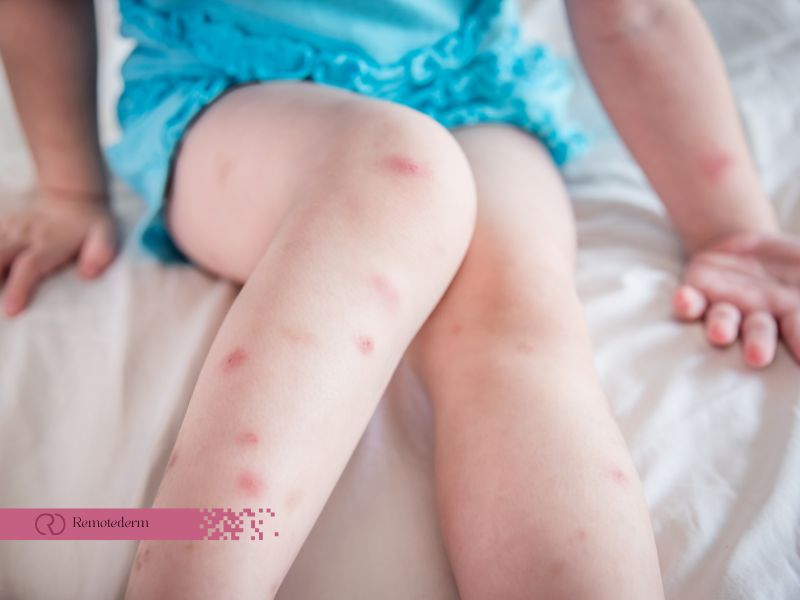When it comes to annoying insect bites, bed bug bites vs. mosquito bites is a crucial consideration for those seeking relief and understanding the pests that may be plaguing them. These tiny creatures can leave you with itchy, red bumps that can be quite bothersome. However, it’s important to differentiate between bed bug bites and mosquito bites to effectively treat them and prevent further infestation. In this comprehensive guide, we’ll delve into the characteristics, identification, and treatment of bed bug bites and mosquito bites, helping you understand the differences and take appropriate measures.
Identifying Bed Bug Bites
When it comes to identifying bed bug bites, understanding their distinctive characteristics and the factors surrounding their occurrence is important. Bed bugs, those pesky nocturnal pests that feed on the blood of humans and animals, leave behind telltale signs that can help you differentiate their bites from those of other insects. By recognizing these key factors, you can better understand the presence of bed bugs and take appropriate measures to address the infestation.

Appearance
Bed bug bites often emerge on the skin as tiny, red, itchy pimples. They often occur in clusters or lines, forming a pattern that is distinct from mosquito or flea bites. These bites may be slightly raised and can resemble small welts or hives. However, it’s important to note that the appearance of bed bug bites can vary from person to person, depending on their individual reaction to the bites and the extent of the infestation.
Bite Patterns
One of the telltale signs of bed bug bites is the specific patterns they create on the skin. Bed bugs often feed multiple times during a single feeding session, resulting in bite patterns that are linear or clustered. You may notice a series of bites arranged in a row, forming a straight line on your skin. Alternatively, the bites may be grouped closely together, appearing as a cluster of small, red bumps. This distinct bite pattern can be a key indicator of a bed bug infestation.
Common Bite Locations
Bed bugs are experts at hiding and seeking shelter in various nooks and crevices, particularly in mattresses, furniture, and bedding materials. As a result, their bites often occur in areas that come into direct contact with these surfaces. Common locations for bed bug bites include the arms, legs, face, neck, and back. These areas are typically exposed while you sleep, providing easy access for bed bugs to feed on your blood. It’s worth noting that while these locations are commonly targeted by bed bugs, bites can occur on any part of the body that is exposed during sleep.
Itching and Skin Reactions
Bed bug bites can cause varying degrees of itching and skin reactions. Some individuals may experience mild itching and redness, while others may develop more intense symptoms. The severity of the reaction depends on factors such as an individual’s sensitivity to the bed bug saliva, the number of bites received, and the duration of the infestation. It’s important to resist the urge to scratch the bites, as excessive scratching can lead to skin irritation, secondary infections, and potential scarring. Applying topical anti-itch creams and taking oral antihistamines can help alleviate itching and reduce inflammation.
Identifying Mosquito Bites
Before jumping into the differences between mosquito bites vs bed bug bites, let’s get an overview of mosquito bites and the potential implications these bites can have on individuals. Mosquitoes, those ubiquitous insects that seem to be everywhere, have a remarkable ability to thrive in a wide range of environments. Unfortunately, their presence is not only annoying but can also pose health risks, as they are known to transmit diseases. It’s important to be able to identify mosquito bites, both for personal comfort and to take appropriate measures to protect oneself.

When a mosquito bites, it injects a small amount of saliva into the skin, which acts as an anticoagulant to prevent blood clotting. This saliva contains proteins that trigger an immune response in the body, leading to the characteristic itching, redness, and swelling associated with mosquito bites. These symptoms usually occur between minutes to hours of being bitten. Here’s how to identify mosquito bites:
Appearance
Mosquito bites typically manifest as small, round, and raised bumps on the skin. They often have a reddish hue and can vary in size depending on an individual’s reaction. These bumps may resemble tiny welts or hives and are distinct from other types of insect bites. Unlike bed bug bites, which tend to appear in clusters or linear patterns, mosquito bites are more sporadic and scattered across different areas of the body. However, it’s important to note that the appearance of mosquito bites can vary slightly depending on the person and their specific reaction to the mosquito’s saliva.
Itching Sensation
One of the most notorious characteristics of mosquito bites is the intense itching sensation they provoke. The saliva that mosquitoes inject into the skin when they bite contains proteins that trigger an immune response in our bodies. Histamines are released as a result of this immunological reaction, causing swelling, redness, and itching. The urge to scratch mosquito bites can be overwhelming, but excessive scratching should be avoided, as it can break the skin and increase the risk of secondary infections. To alleviate the itching, various remedies can be used, such as applying an anti-itch cream, taking antihistamines, using cold compresses, or trying natural remedies like aloe vera or tea tree oil.
Bite Locations
Mosquito bites can occur on any part of the body that is exposed to these flying insects. Common bite locations include the arms, legs, face, and other areas of exposed skin. However, the specific areas bitten can vary depending on the time of day, mosquito species, and personal circumstances. Mosquitoes are attracted to body heat, carbon dioxide, and certain scents, so areas that emit more heat or have a higher concentration of these attractants may be more prone to bites. Additionally, some species of mosquitoes have preferences for certain areas of the body, such as ankles or wrists. Being aware of the typical bite locations can help you take proactive measures to protect yourself, such as wearing long-sleeved clothing or applying mosquito repellent to specific areas.
Treatment for Bed Bug Bites
To better understand bed bug bites vs mosquito bites, it is essential to gain knowledge about various treatment methods available for each. When dealing with bed bug bites, it’s crucial to address both the bites themselves and the underlying infestation. Here are some recommended steps for treating bed bug bites:
- Wash the Affected Area: Gently clean the bites with mild soap and water to prevent infection.
- Apply Calamine Lotion: Calamine lotion or over-the-counter hydrocortisone creams can provide relief from itching and reduce inflammation.
- Use Cold Compresses: Apply a cold compress or ice pack wrapped in a cloth to the bites for 10-15 minutes at a time to alleviate swelling and discomfort.
- Avoid Scratching: Despite the urge to scratch, it’s important to resist, as it can lead to skin damage and increase the risk of infection.
- Seek Medical Attention if Necessary: If you experience severe allergic reactions or signs of infection, such as increased pain, pus, or red streaks around the bite, consult a healthcare professional.

For those in need of immediate assistance without the desire to go through long wait times for an in-person visit to a dermatologist, an excellent alternative to consider is the convenient service offered by Remotederm. With Remotederm’s online dermatology consultation services, accessible from anywhere in Canada, patients can receive expert guidance and bed bug bite treatments online from dermatologists without the need for physical appointments.
Treatment for Mosquito Bites
Mosquito bites can be managed effectively with some simple remedies. Here’s how you can alleviate the symptoms of mosquito bites:
- Clean the Area: Proper skin care is key! To limit the risk of infection, wash the afflicted area with warm water and mild soap.
- Apply Anti-Itch Cream: Over-the-counter hydrocortisone creams or calamine lotion can provide relief from itching and reduce inflammation.
- Use Cold Compresses: Similar to bed bug bites, applying a cold compress or ice pack wrapped in a cloth can help reduce swelling and ease discomfort.
- Avoid Scratching: As tempting as it may be, scratching mosquito bites can prolong healing and increase the risk of infection. Use alternative methods to alleviate the itchiness, such as applying a paste of baking soda and water.
- Preventive Measures: To minimize mosquito bites in the future, consider using insect repellent, wearing long-sleeved clothing, and installing screens on windows and doors to keep mosquitoes out.
Conclusion
In summary, identifying and treating bed bug bites vs mosquito bites require careful observation and understanding of their distinct characteristics. Bed bug bites often appear as raised, red bumps in linear or clustered patterns, primarily in areas exposed to infested surfaces. On the other hand, mosquito bites are scattered, round bumps that cause intense itching. Treating these bites involves proper hygiene, soothing creams, cold compresses, and avoiding scratching to prevent infection.
Remember, if you suspect a severe allergic reaction or signs of infection, it’s essential to seek medical advice from a skin dermatologist. By following these guidelines, you can effectively manage and identify bed bug bites vs mosquito bites, ensuring a more comfortable and itch-free experience.
FAQs
- How can you identify bed bug bites?
Bed bug bites often appear in clusters or lines and can resemble small welts or hives. They may have a distinct pattern and are typically found on exposed areas of the body.
- Where do mosquito bites commonly occur?
Mosquito bites can occur on any exposed part of the body, with common locations being the arms, legs, face, and other areas of exposed skin.
- Why do mosquito bites itch?
Mosquito bites trigger an immune response in the body, causing the release of histamines that lead to itching, redness, and swelling.
- Can you prevent mosquito bites?
Yes, you can minimize mosquito bites by using insect repellent, wearing long-sleeved clothing, and installing screens on windows and doors.
- How should you clean the area of a mosquito bite?
Washing the affected area with mild soap and water can help reduce the risk of infection from mosquito bites.
